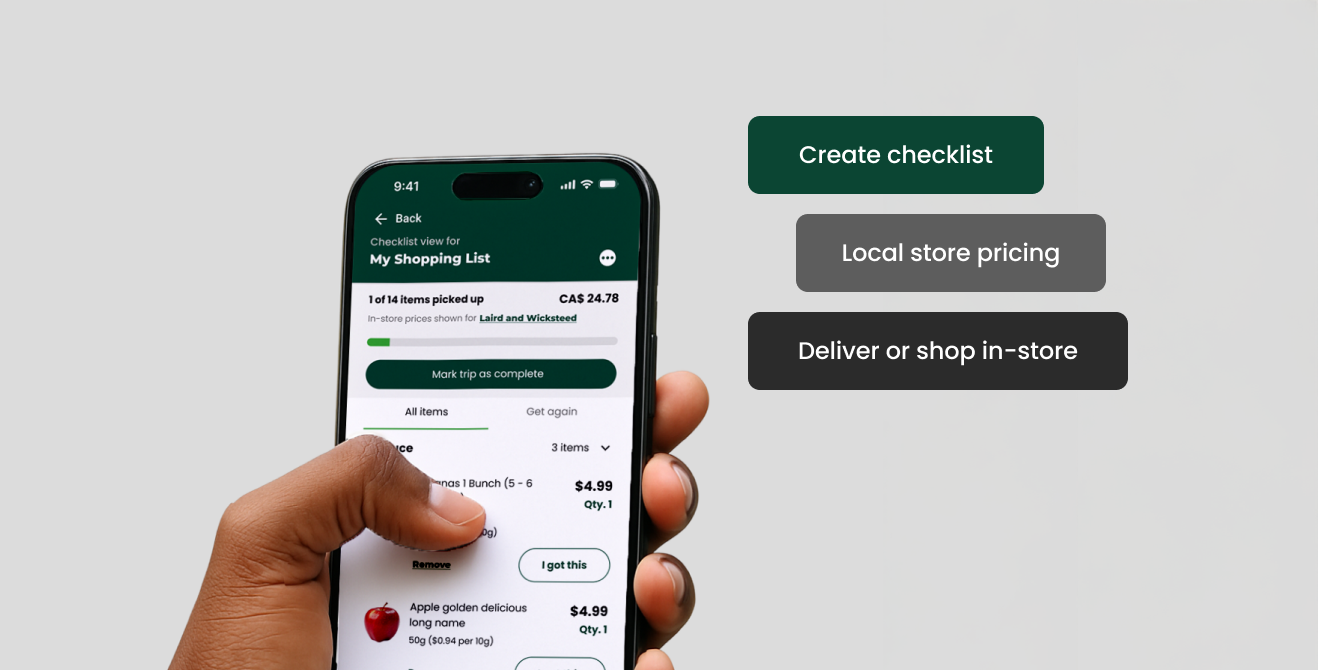This page contains only a high level view of this project. Please get in touch if you would like to learn more.
IBM led the overhaul of Sobeys’ website, where recipe pages were identified as having low user engagement. Our goal was to develop a new strategy to revitalize the recipe experience by better connecting it with business objectives of increasing basket size and direct add-to-cart functionality.
Product lead,
UI/UX designers
Service designers
Sobeys marketing stakeholders
Adobe Experience Manager teams
A peek at our final designs

Salvaging 100+ pages of underperforming recipe content
Sobeys had spent years producing recipe articles and instructional pages that was not seeing engagement from users. They hoped to repurpose this content in their new website.
The goal for recipe content pages was to increase customer basket size through cross-sells. They supported Sobeys marketing campaigns.
Print recipe content helped users grow interested in product lines like Compliments or Panache. Sobeys aimed to carry this engagement over to the redesign of their online website.
Recipe-related pages had inconsistent layouts because they were manually built by different marketing teams. I hypothesized that inconsistencies created jarring browsing experiences.

How could we make users interested in Sobeys recipes?
I conducted 20 contextual inquiries to understand customer meal-planning practices and their opinion of Sobeys recipes.
Most interviewees preferred seeking external sources for inspiration, such as food influencers, chefs, or trending cooking blogs. Only one user said they used Sobeys recipes, but from print flyers.
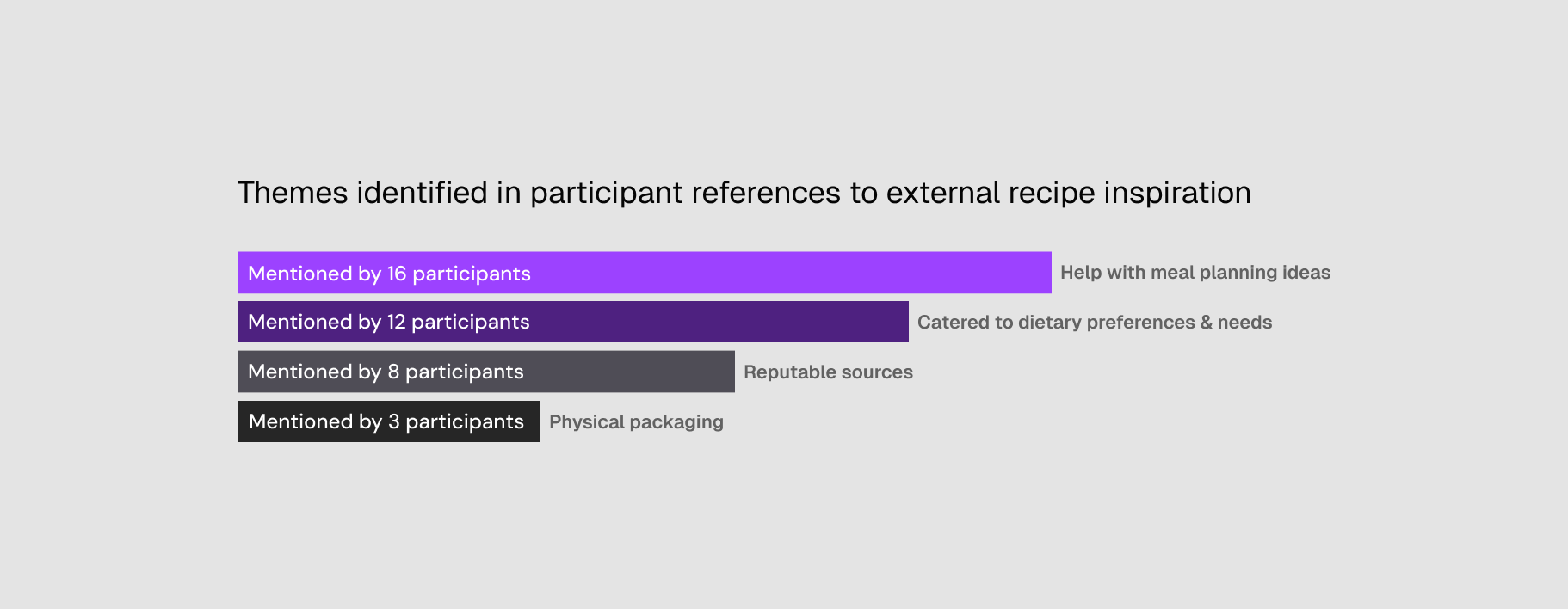
A breakthrough moment: shoppers were willing to engage with recipe content in sudden moments when it adapted to their needs.
Participants often swapped items for deals or alternatives, which left them uncertain about what meals to prepare, which prompted them to figure out a new plan.
→ Recipes could reduce the mental load of meal planning
Participants enjoyed coming across useful information while looking for something else. For example, recipe ideas on physical packaging, which are often omitted online.
→ Contextual information inspired new uses for products of interest

How might we leverage AI to transform existing recipe content into personalized shopping inspiration?
From research, I inferred that social media was the most ubiquitous source of inspiration because its AI recommendation engine catered to individual preferences and behavioural data

Bringing the solution together
The first challenge was simplifying scalability across 100+ content pages, which I addressed by developing headless CMS templates for recipe pages.
I collaborated with Adobe Experience Manager to ensure that non-technical Sobeys teams could customize and publish their website. Following a content audit, we prioritized three templates for articles.

Template 3 was selected because the 'right rail' separated interactive components from article contents, while keeping share buttons, tags, related content, and ads from disrupting the reading flow.

Before templates were determined, I fleshed out components and their variants, design guidelines, and customization permissions. These requirements were immutable and applied globally across other page templates.

We integrated AI-powered suggestions across the search and browsing experience, enabling users to discover and access recipes contextually.
We designed a preview interaction within the search function.
As users type, results update in real time with products, recipes, and articles on one sheet—encouraging discovery and boosting cross-engagement.
Before
The search experience was static, requiring users to leave their current context and load a separate results page.
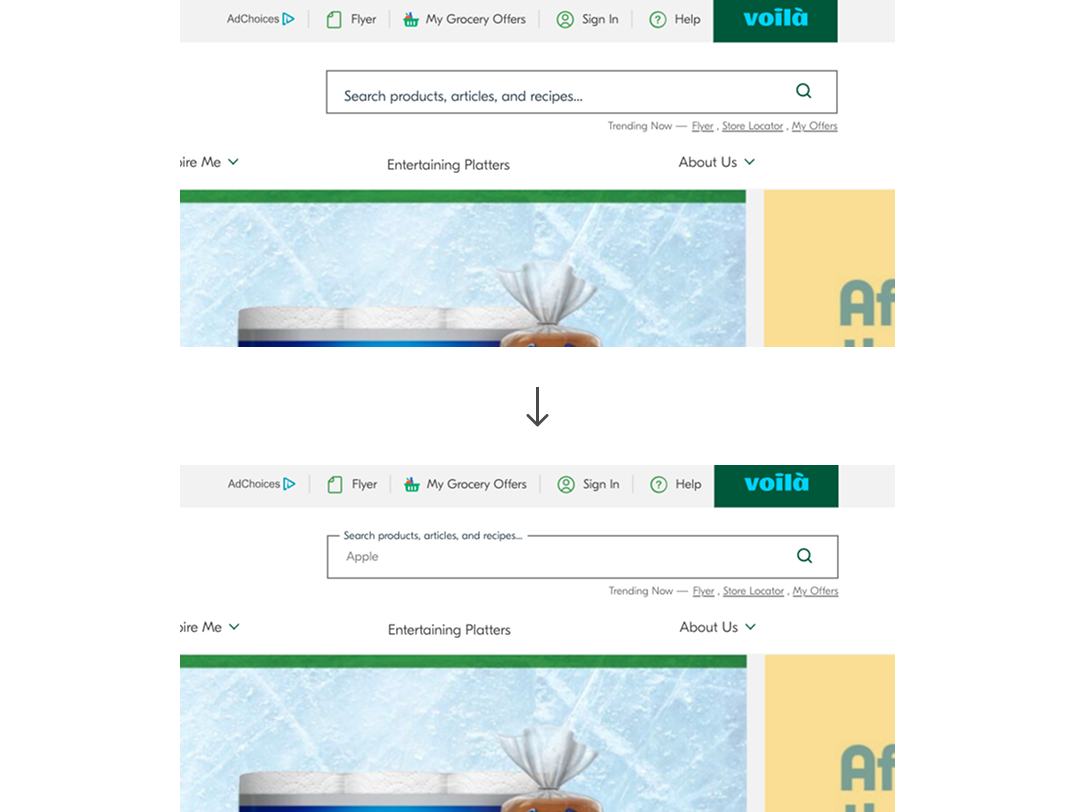
After
We redesigned search to be dynamic, offering users an interactive preview of results without disrupting their flow.

We also strategically situated recipe carousels to various pages across Sobeys when users made key shopping decisions
Product pages were a new addition to Sobeys.com. We included personalized recipe recommendations based on user profile data from Scene+ and Sobeys.com, as well as their browsing history on the website. This was also applied to the homepage and several other pages.

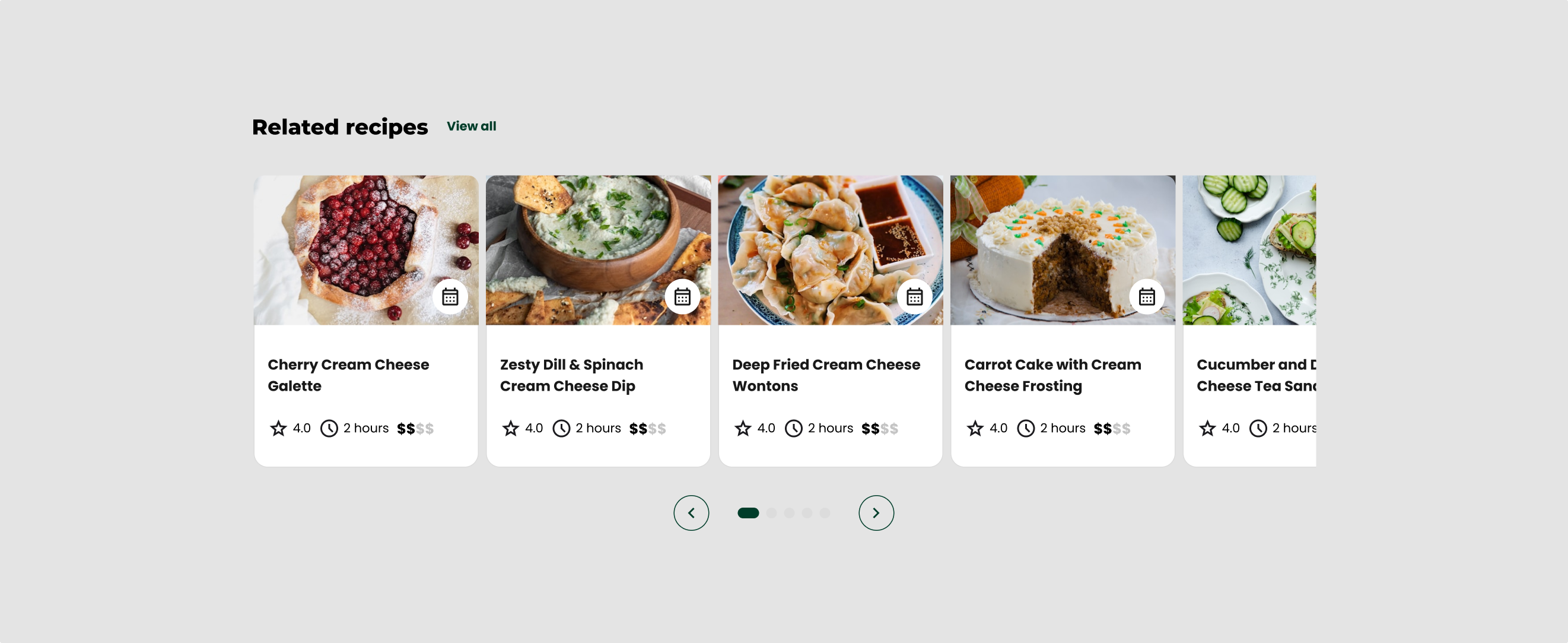
Integration of an add-to-cart feature from recipe pages reduced friction between inspo and purchase.
A substitution feature let users swap ingredients with ease, adding flexibility while discovering more Sobeys products.
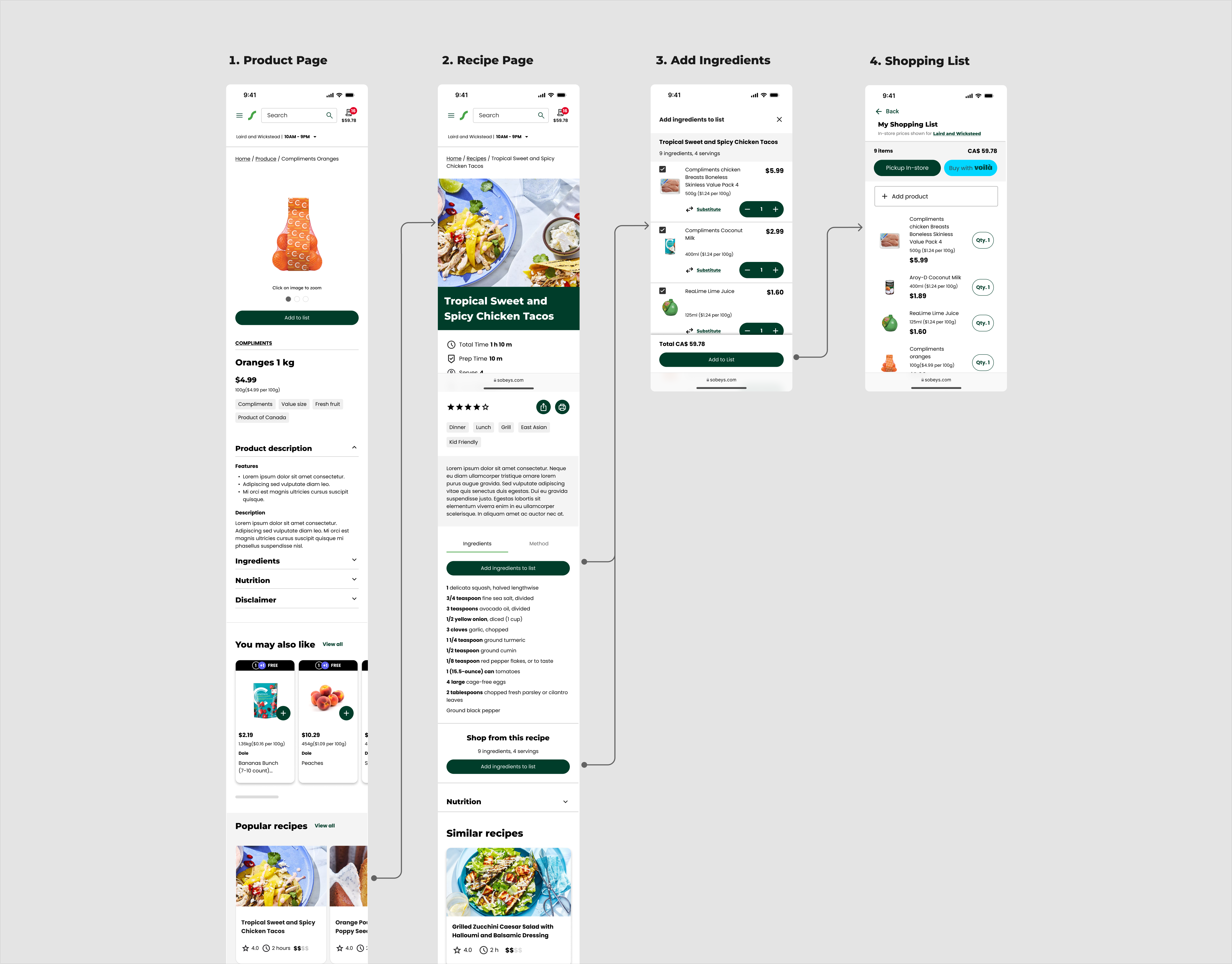
Designing for growth
The redesign of articles resulted in a big win for our team, contributing to a projected revenue growth of 23% in the following year. Standardized CMS templates empowered marketing teams to scale and manage content efficiently across 4 other retail sites.
Other accomplishments:
I helped oversee the design system, delivering 110+ reusable components and 10+ CMS web templates across mobile and desktop.
My work helped lay the groundwork for a new meal-planning function with GenAI capabilities.
I mentored two designers and one intern, fostering skill development and collaboration within an agile, cross-functional environment.
Reflection
I established a culture of design system maintenance early on, despite the growing pains of working within a small 6-person product team.
Developing a workflow required trial-and-error and open communication between teammates. In the long run, this made it far easier to implement changes and scale to Empire's other grocery retail websites.






